A Cameo Appearance
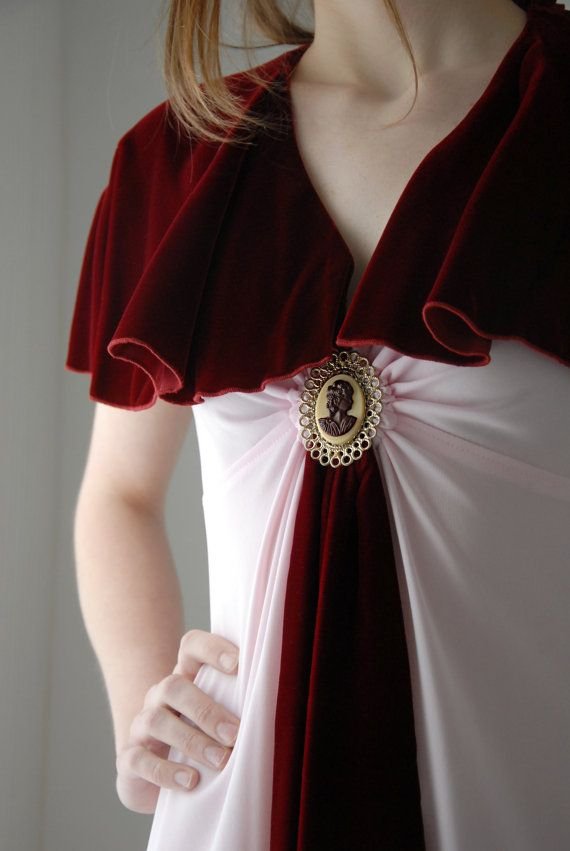
What do you think of when you hear the word "cameo"—other than Alfred Hitchcock? When I think of a cameo, a silhouetted portrait of a Victorian woman in an oval-shaped frame comes to mind. While this is an accurate modern-day way of looking at it, the word itself originates from the physical process of creating original cameos that are many centuries old.
"Cameo" is the method of carving a relief image onto a surface, usually gemstones or shell. Western cameos date back to ancient Greece where stone and ivory cameos depicted pictorial motifs such as animals, mythology, and day-to-day life.
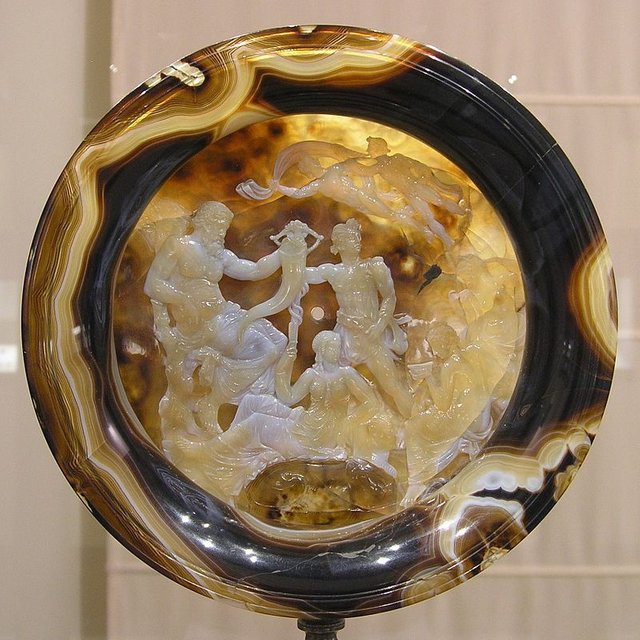
The Farnese Cup (Tazza Farnese) is a 2nd-century BC cameo cup of Hellenistic Egypt in four-layered sardonyx agate. (courtesy Ana al'ain, [Public domain], via Wikimedia Commons)
Historically, cameos were defined as such by the natural contrast in stone layers, one of which was carved away to reveal the underlying color. Sculptors also used glass for their cameos, such as this example below where white glass was carved to reveal the violet-blue glass underneath.
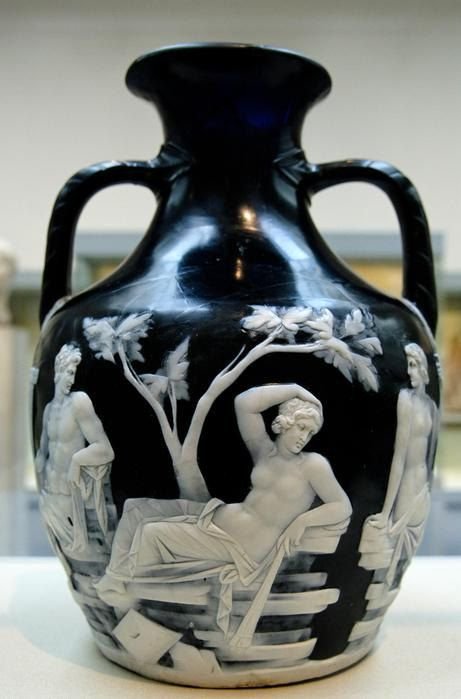
The Portland Vase is known as the most outstanding of the surviving works of ancient art glass, dated between AD 1 and AD 25, Rome. (courtesy For All and All)
Portraits of royalty were commissioned and given as gifts to their subjects, such as this dual-portrait cameo of King Charles V and his son.
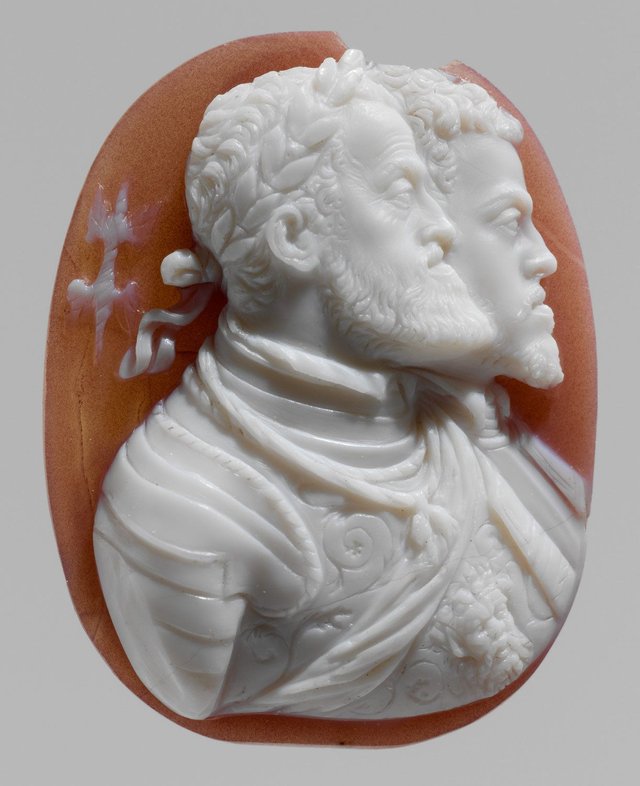
Emperor Charles V and his Son Philip II of Spain, 1550, Italy (courtesy Metropolitan Museum of Art)
Trends reemerge in the Victorian era where neoclassic designs are recreated into small, wearable brooches, and other jewelry pieces. Shell cameos are translucent when held up to light.
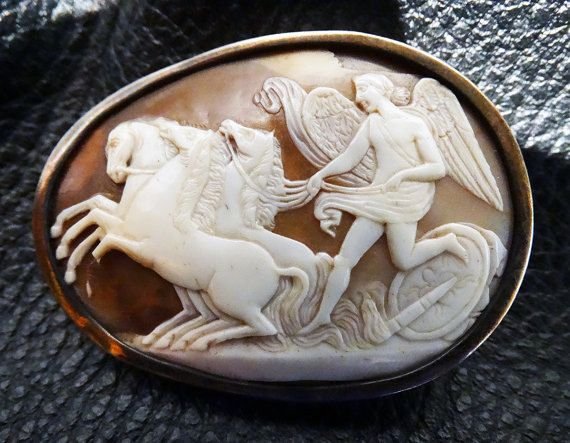
A neoclassic design, hand-carved shell cameo brooch, "Peace Halting the Horses of War," 1880s. (courtesy Elegant Artifacts)
Queen Victoria played a huge role in the revival of the cameo trend in the 1800s. Victorian women often held cameos of their own likenesses that were among their prized possessions.
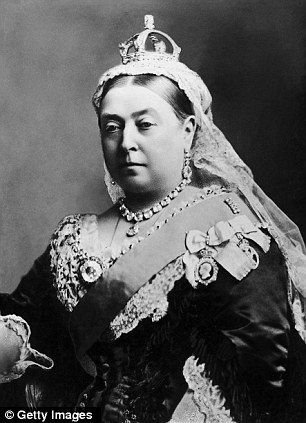
Queen Victoria wore cameos for her official Diamond Jubilee portrait in 1870.
Cameos were created for wealthy patrons in remembrance of their recently-departed loved ones and were often worn for funerals and mourning portraits.
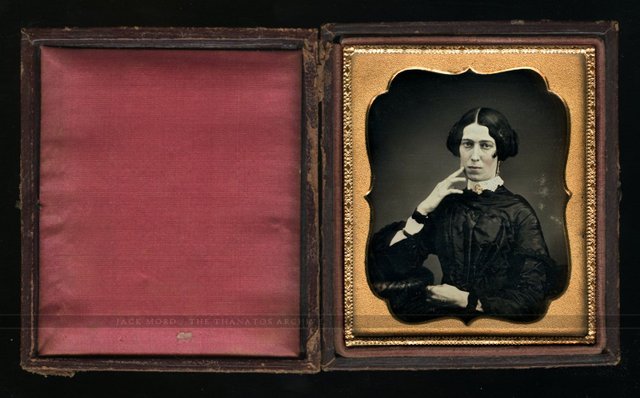
An 1850s daguerreotype photograph of a woman in mourning with a cameo brooch on her neck. (courtesy diabolus.etsy.com)
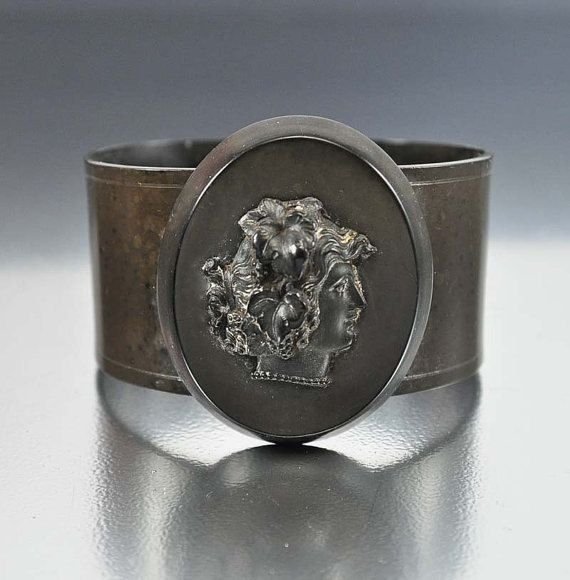
A Victorian mourning portrait bracelet made from gutta percha, a hardened sap from tropical trees indigenous to Southeast Asia. (courtesy boylerpf)
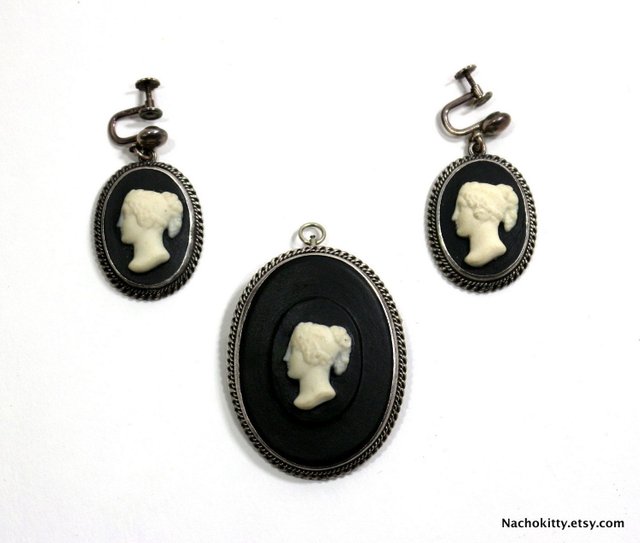 An antique mourning jewelry set from the 1890s (courtesy NachoKitty)
An antique mourning jewelry set from the 1890s (courtesy NachoKitty)
Cameo gemstones include agates with layers of different colors such as onyx and jasper, allow for depth and nuance in the carvings. Some layers are dyed to produce a dramatic, contrasted effect. Other non-layered gemstones such as coral and amethyst were fashioned into beautiful monochrome cameos.
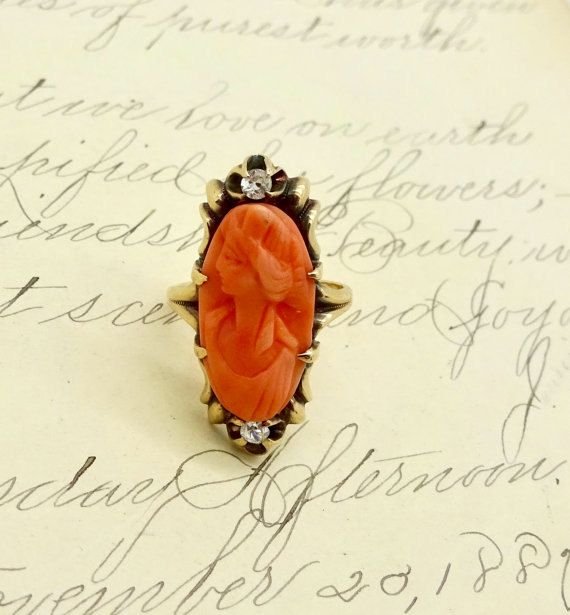
An antique 10k gold carved coral cameo & diamond ring, 1920s (courtesy DaffodilsVintage)
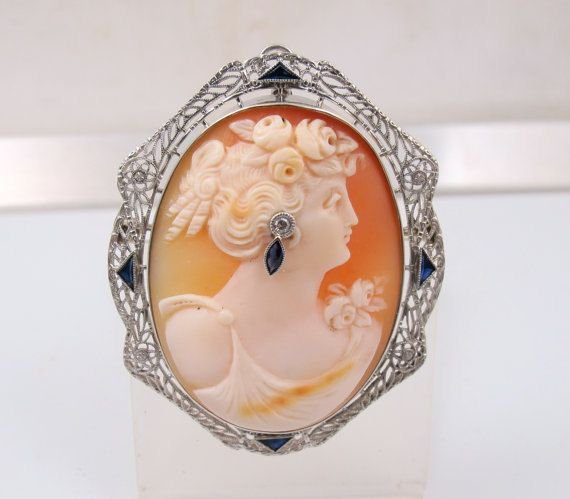
A 1920s 14K white gold cameo with sapphires and diamonds (courtesy TonettesTreasures)
Today the cameo is a term that is defined more loosely as any portrait in an oval frame in any medium.
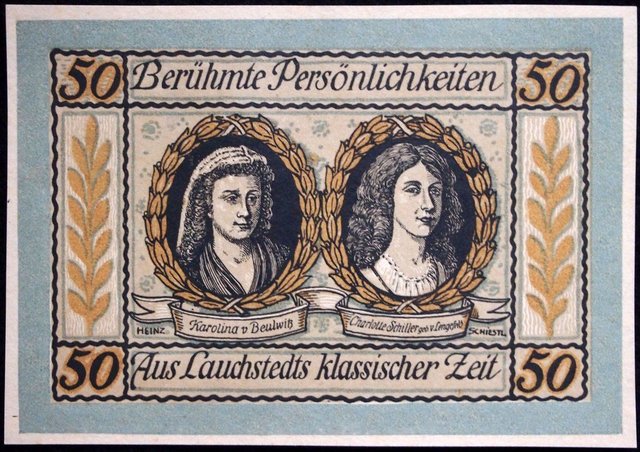 Cameo portraits on German paper notgeld, Lauchstedt, 1921 (courtesy Notgeld Market)
Cameo portraits on German paper notgeld, Lauchstedt, 1921 (courtesy Notgeld Market)
Cameos, most often mass produced by laser and ultrasonic techniques in the modern era, rise and fall in fashion, and have adorned everything from powder boxes to clothing.
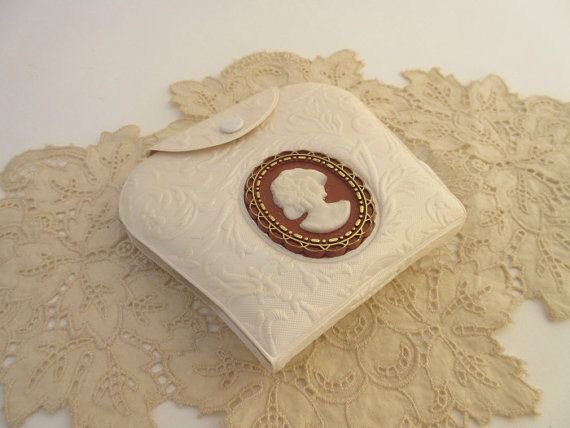
A vintage 1950s travel manicure set with decorative cameo (courtesy AnnaLeesAttic)
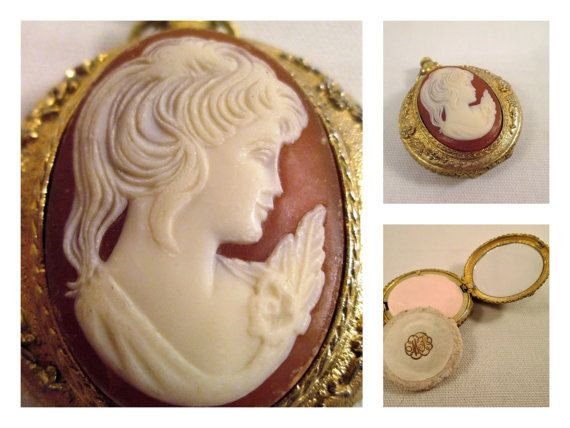
A vintage 1950s powder compact with cameo (courtesy VintageBADTIQUE)
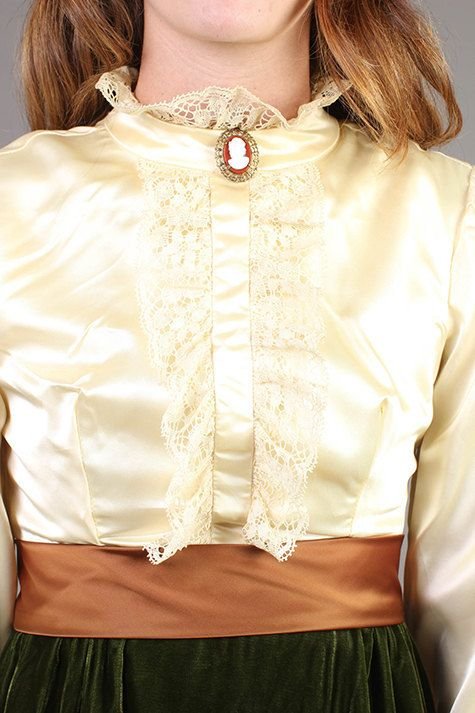
A vintage 1960s Victorian-inspired dresswith cameo brooch (courtesy )
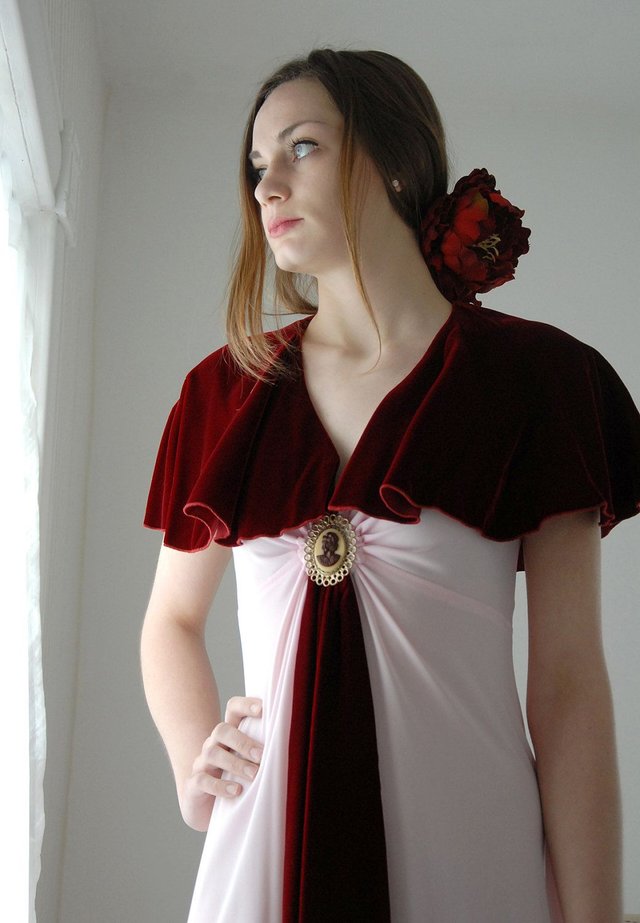 A 1970s Victorian-inspired dress with cameo, (Roselein Rarities)
A 1970s Victorian-inspired dress with cameo, (Roselein Rarities)
Based on the literal meaning of the word cameo, even the term "cameo appearance" is based upon it: "a small character part that stands out from the other minor parts." Directors and writers such as Stan Lee and Alfred Hitchcock have become famous for their cameo-role appearances in their films.
The cameo, however small it may be, has been a huge part of the art, fashion and movie-making world, and it has certainly stood out from the other minor parts.
###
Follow Roselein Rarities:
https://www.facebook.com/RoseleinRarities
https://www.instagram.com/RoseleinRarities